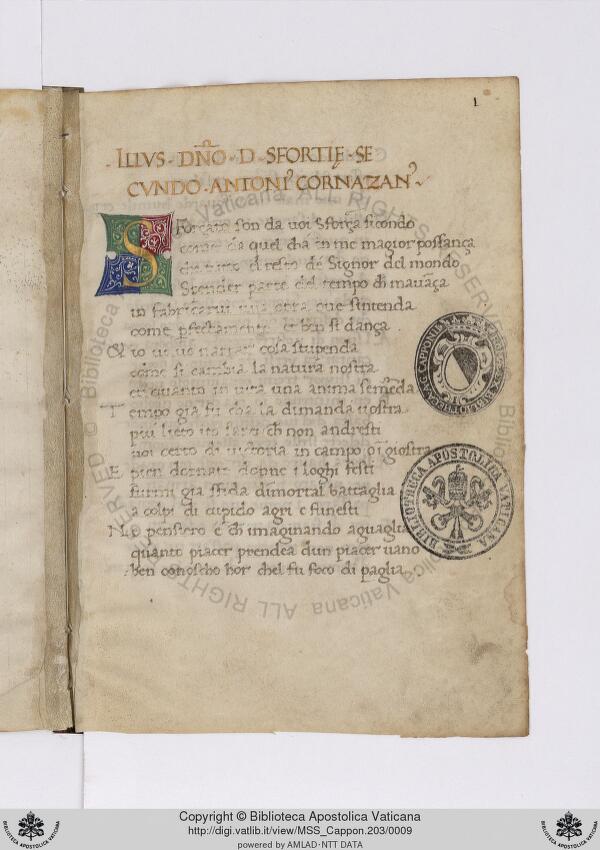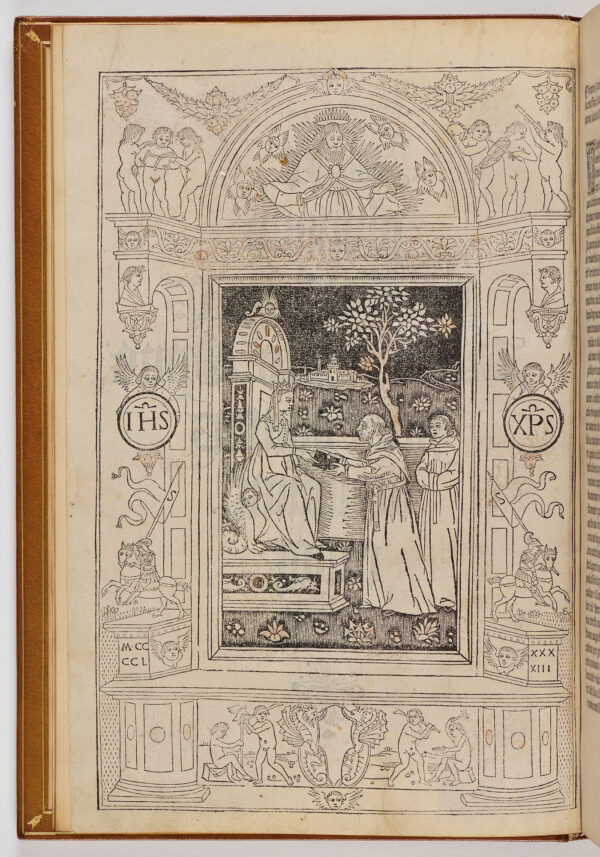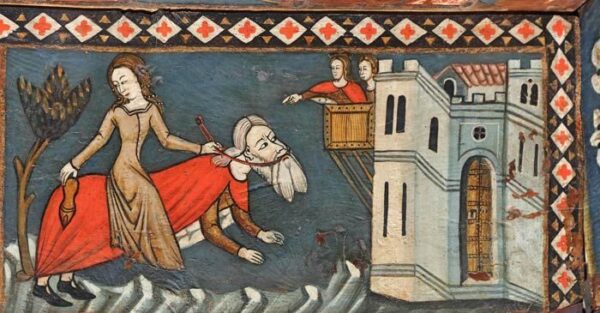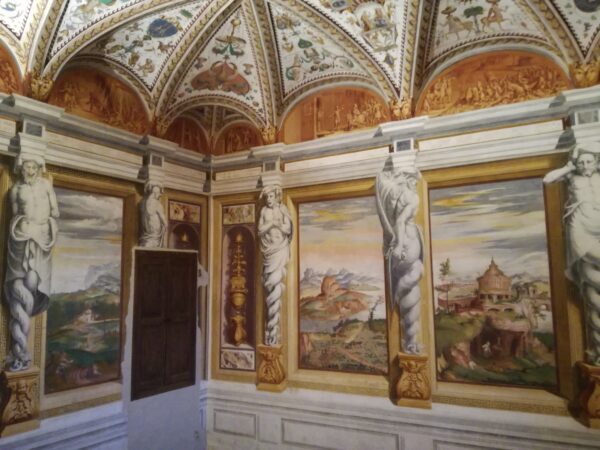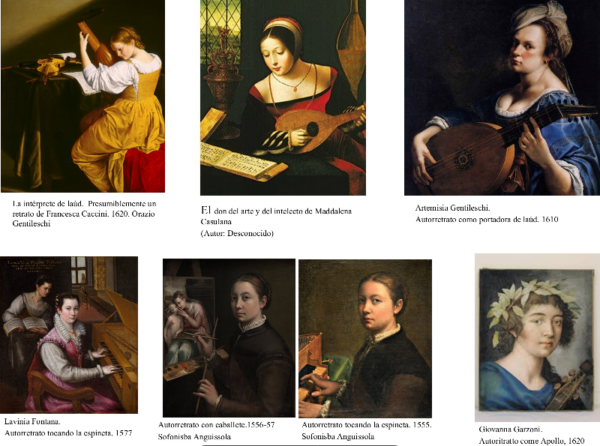Pagine
Condividi e segnala
Tag
- Althusser
- Antropologia
- Baumgarten
- Bourdieu
- Conceivability of Nothingness
- Conciliation
- corpo
- Derrida
- Dialectics
- Difference
- distinzione
- Europe
- Expression
- giudizio
- Grace
- Habitus
- Heidegger
- Hobbes
- Kant
- linguaggio
- Lyotard
- marxismo
- Medieval Aristotelianism
- Metaphysics
- Nature
- Negative
- Nichts
- nihil
- Nihilism
- nihil negativum
- nihil privativum
- Non-identical
- Nothing
- Nothingness
- onore
- politica
- postmoderno
- pratica
- riconoscimento
- Smith
- solitudine
- Sovranità
- Spinoza
- Thomas Aquinas
- Western Ontology
-
Articoli recenti
Link
Archivi categoria: Monografica I
Introducción
Juan Manuel Forte, Nuria Sánchez Madrid, Valerio Rocco
Juan Manuel Forte (UCM), Nuria Sánchez Madrid (UCM) y Valerio
Rocco (CBA/UAM)
Pubblicato in Monografica I, NUMERO 18
Lascia un commento
Público y privado en los escritores filóginos del Cinquecento italiano
Mercedes Arriaga Flórez & María Mascarell García
Mercedes ArriagaFlórez: Universidad de Sevilla (marriaga@us.es; ORCID: 0000-0001-6039-6949); MaríaMascarell García: Universidad de Córdoba (mmascarell@uco.es; ORCID: 0000-0003-2717-2796).
Public and Private in the Philogynist Writers of Italian Cinquecento
Abstract: A series of galleries of illustrious women and Renaissance philogynous treatises by little-known and rarely studied writers – such as Antonio Cornazzaro, Bartolomeo Goggio, Vespasiano da Bisticci, Pompeo Colonna, Luigi Dardano, Lodovico Dolce, and Paolo Giovio – support the social and political utility and convenience of women projecting themselves and acting in the public sphere. With the intention of promoting new ideas about … Continua a leggere
Pubblicato in Monografica I, NUMERO 18
Lascia un commento
Isotta Nogarola y Teresa de Cartagena. Dos tentativas femeninas de acceso a la República masculina de las letras por la puerta estrecha de la teología
José Luis Egío
Departamento Filosofía y Sociedad, UCM (jegio@ucm.es; ORCID: 0000-0002-9256- 8490).
Isotta Nogarola and Teresa of Cartagena. Two female attempts to enter the male Republic of letters through the narrow door of theology
Abstract: This article offers a comparative perspective on two of the main theological-philosophical works written by women in the cultural context of the Christian Latin Mediterranean in the mid-fifteenth century: the Latin contentio De Pari aut Impari Evae atque Adae Peccato, written by the Veronese humanist Isotta Nogarola (1418-66) in 1451, and the treatise Admiraçion operum Dey, written around 1475 by … Continua a leggere
Pubblicato in Monografica I, NUMERO 18
Lascia un commento
Resistir y combatir a Aristóteles: Cristina de Pizán y Lucrecia Marinella
Juan Manuel Forte
Universidad Complutense Madrid (jmfortem@ucm.es; ORCID: 0000-0003-1344- 552X).
Resisting and Fighting Aristotle: Christine de Pizan and Lucrezia Marinella.
Abstract: From the 13th century onwards, Aristotle’s authority dominated the scholastic and university spheres for several centuries. Furthermore, the Stagirite became a key reference point in discussions about biological, characterological, and moral differences between men and women. However, these differences were often perceived as biased, with several female writers criticising sexist elements in Aristotle’s works. For example, during the early Renaissance, Christine de Pizan offered a defensive argument against Aristotle, drawing mainly on her own life experience. Two … Continua a leggere
Pubblicato in Monografica I, NUMERO 18
Lascia un commento
Conversaciones sobre el género en elCinquecento italiano: contrastes y afinidades entre BaldassarreCastiglione y Giulia Bigolina
Nuria Sánchez Madrid
Dpto. De Filosofía y Sociedad UCM/GINEDIS/INSTIFEM (nuriasma@ucm.es; ORCID: 0000-0003-4273-5948).
Dialogues on Gender in Italian Cinquecento: Contrasts and Affinities between Baldassarre Castiglione and Giulia Bigolina
Abstract: This paper focuses on the different philogyny approaches that Baldassarre Castiglione and Giulia Bigolina displayed in the Italian Cinquecento intellectual space. First, I cast light on the strengths and weaknesses that the conversations of both sexes in the book III of The Courtier by Castiglione mean for fostering women’s emancipation. Second, I address the novel Urania by Giulia Bigolina, the first novel written by a woman in Italian literature, which … Continua a leggere
Pubblicato in Monografica I, NUMERO 18
Lascia un commento
Mujeres artista. Influencias y relaciones desde la Italia de Francesca Caccini
Begoña Fernández Cabaleiro
Departamento de Filosofía y Sociedad, Facultad de Filosofía, Universidad Complutense de Madrid (bfcabaleiro@filos.ucm.es; ORCID: 0000-0002-4644-5799).
Women artists. Influences and relationships from Francesca Caccini’s Italy
Abstract: Francesca Caccini premiered La liberazione di Ruggiero in 1625, considered the first opera composed by a woman, the only one that survives of the five created by Francesca, also the first Italian opera performed outside Italy. In June 2024, four hundred years later, it premiered in Madrid with the collaboration of the Teatro Real, generating a new reflection on women in cultural and artistic creation in the 16th/17th centuries, a … Continua a leggere
Pubblicato in Monografica I, NUMERO 18
Lascia un commento

